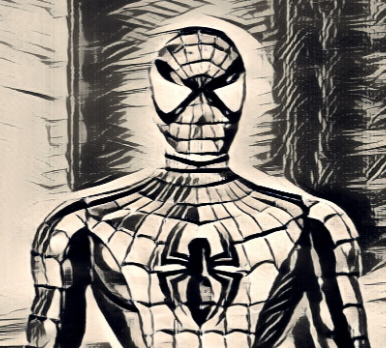In the realm of artistic expression, the depiction of Spider-Man stands as a symbol of liberation and strength. Drawing:7barsug8u0w= SpiderMan isn’t just about creating a visual image; it’s about capturing the essence of a hero who represents agility, resilience, and the balance between ordinary life and extraordinary responsibility. This article delves into the techniques, styles, and symbolism involved in drawing Spider-Man, inviting artists to explore their creativity while honoring a timeless icon.
Table of Contents
Spider-Man’s Iconic Pose
In the world of comic book art, Spider-Man is often depicted in his iconic pose swinging through the cityscape. This portrayal captures his agile and acrobatic movements, emphasizing the freedom and exhilaration that define his character. Artists meticulously craft each detail, from the arc of his swing to the tension in his muscles, creating a visual spectacle that resonates with fans worldwide.
Also read: Drawing:Q5pbirjjkfa= Butterfly Explained
Dynamic Action: Capturing Spider-Man’s swinging pose involves understanding the physics of motion. The curve of his body, the angle of his limbs, and the tautness of his webbing all contribute to the sense of dynamic action that defines this superhero.
Cityscape Backgrounds: Adding urban landscapes in the background enhances the narrative, placing Spider-Man within the bustling environment he protects. Skyscrapers, bridges, and bustling streets all contribute to the atmosphere, emphasizing his role as a guardian of the city.
Also read: Round-the-Clock Rescue: The Importance of 24/7 Emergency Electricians in Sydney
Drawing Spider-Man’s Mask
Crafting Spider-Man’s mask requires meticulous attention to detail to capture the essence of this iconic superhero’s identity. The mask design is more than just a disguise; it’s a symbol of Spider-Man’s connection to both heroism and vulnerability.
Intricate Web Patterns: The web patterns on the mask are symbolic of Spider-Man’s dual life and responsibilities. Artists must pay attention to the symmetry and flow of these lines, ensuring they enhance the character’s expressive features.
Shading and Expression: Shading techniques add depth and dimension to the mask, while subtle changes in the lines around the eyes can convey a range of emotions, bringing the masked hero to life on paper.
Also read: Expert Tips for Choosing the Right Body Care Products
Capturing the Dynamic Movement
To effectively depict Spider-Man’s dynamic movement in a drawing, mastery of fluid lines and dynamic poses is essential. Action sequences play a crucial role in capturing the essence of Spider-Man’s agility and strength.
Fluid Lines: Utilize fluid lines to convey movement, focusing on the flow of Spider-Man’s body and the arcs of his swinging motions. This technique enhances the sense of speed and agility that defines his character.
Also read: Cool:Arl6lmypj2q= Drawings Explained
Action Poses: Experiment with different poses that showcase Spider-Man’s acrobatic abilities. Whether he’s leaping from a building or dodging an attack, capturing these moments requires an understanding of balance and motion.
Also read: Top Reasons to Choose an Airbnb Management Company for Your Property
Adding Details and Shadows
Enhancing Spider-Man’s portrayal involves incorporating intricate details and precise shadows to elevate the visual depth and realism of the artwork.
Advanced Shading Techniques: Shading adds dimension to Spider-Man’s suit, highlighting the contours of his muscles and the texture of his costume. Use gradients to create a realistic portrayal of light and shadow.
Web Details: The webbing on Spider-Man’s suit is iconic. Pay close attention to its design, ensuring it complements the anatomy and movement of the character. This detail not only enhances the visual appeal but also emphasizes the complexity of his identity.
Also read: Wardrobe Saviour: How Fashion Tape Enhances Your Style
The Symbolism of Spider-Man’s Webbing
The webbing design on Spider-Man’s costume serves as more than just a visual motif. It represents his connection to both the world he protects and the internal struggles he faces.
Geometric Patterns: The geometric patterns of the webbing are a testament to Spider-Man’s strategic thinking and problem-solving abilities. These patterns reflect the interconnected challenges he encounters as a hero.
Narrative Depth: Incorporating the webbing into the artwork requires precision and an understanding of how these lines interact with the character’s anatomy and movement. Each strand tells a story, weaving together themes of responsibility, resilience, and the complexity of his dual identity.
Also read: Why Framing Matters: Preserving Your Memories in Melbourne
Conclusion
Drawing:7barsug8u0w= SpiderMan is not merely an exercise in replicating a familiar figure but an opportunity to explore themes of identity, power, and perseverance. Through art, we can engage with the character on a deeper level, appreciating the intricacies that make Spider-Man a timeless symbol of heroism.
Whether through traditional sketches or digital creations, the act of drawing SpiderMan invites artists and fans alike to celebrate a hero who continues to inspire generations with his courage and relatability. As artists infuse their interpretations with personal creativity, they contribute to the ever-evolving legacy of Spider-Man, ensuring that his story is told anew with every stroke of the pen or brush.

